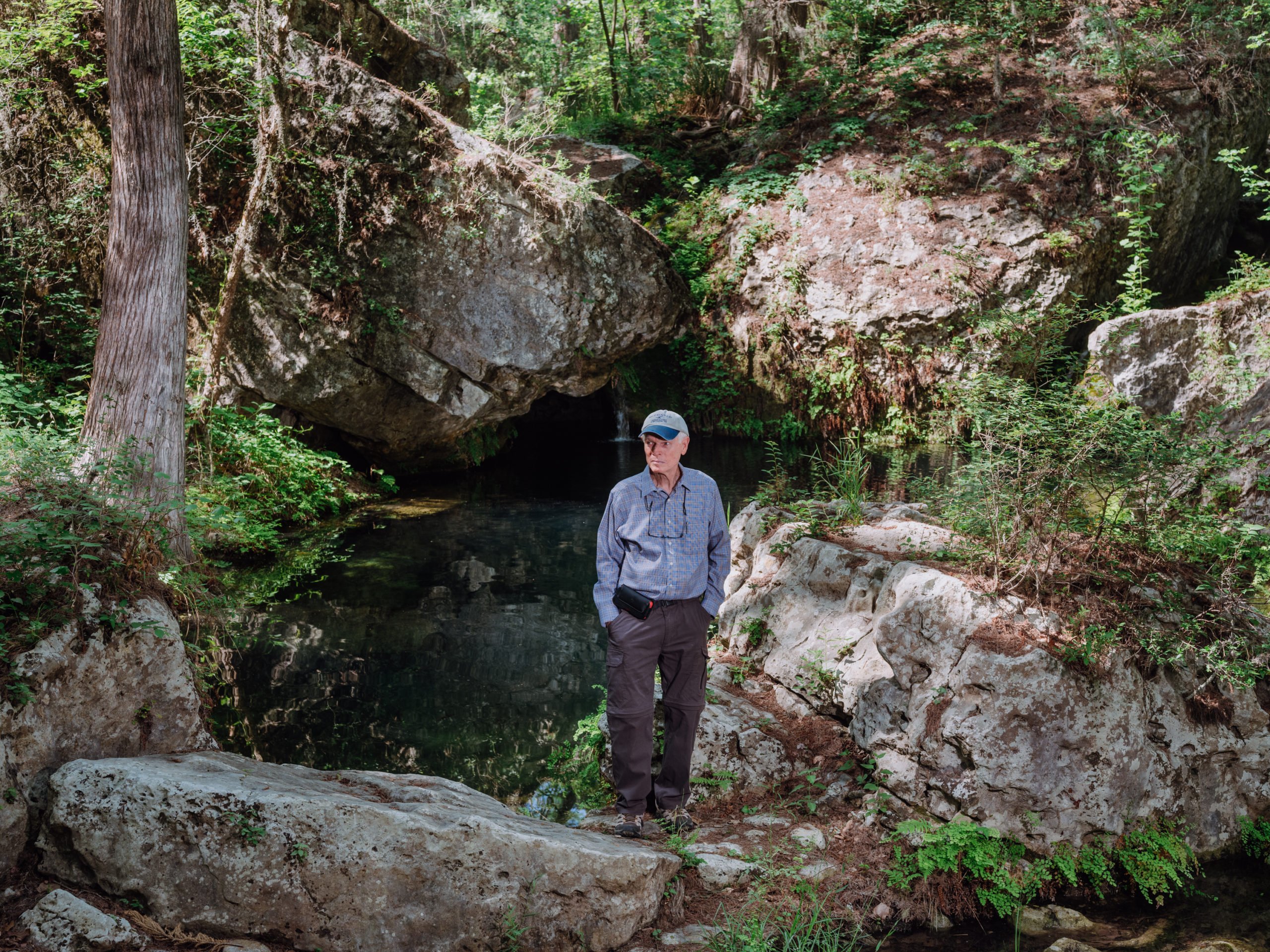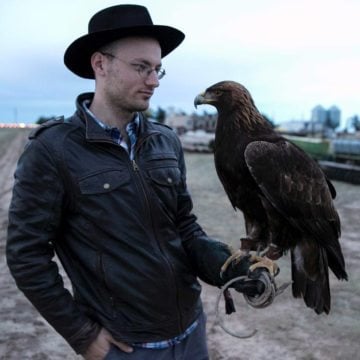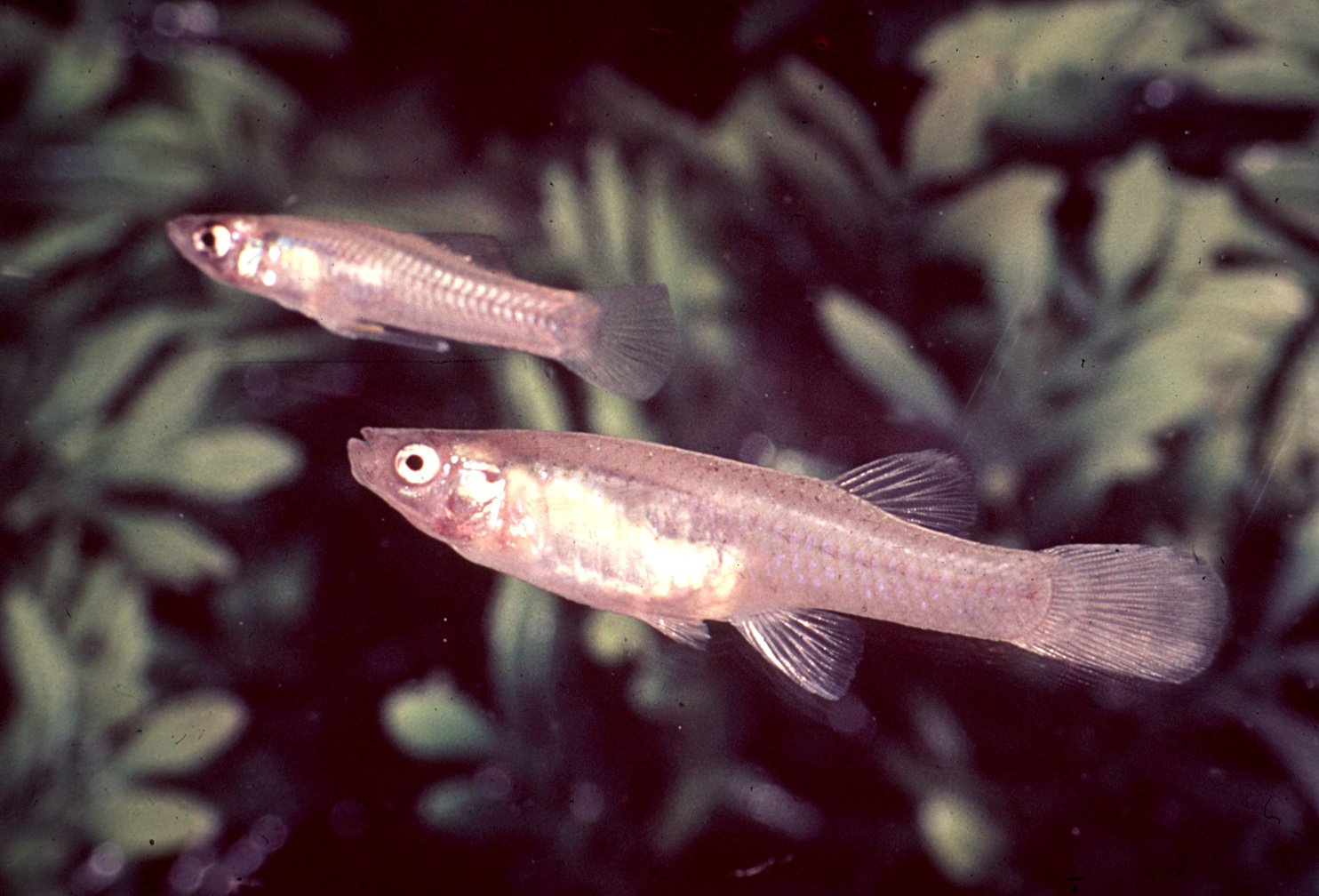A lost world sits at the bottom of Roy Creek Canyon. Nestled in the Texas Hill Country, beneath chasm walls 200 feet high, grows a secret forest of tall timber, live oak and sycamore and century-old cypress, clustered around a spring-fed creek and rushing clear green waterfalls.
The walls are high enough to keep the valley at a half-remove from the flow of solar time, the mornings coming late, the evenings early, shadows creeping out from their base to cloak the forest. High enough that, in 1941, the canyon’s owner John Hunnicutt complained to a young Red Adams that the place was a money pit, a hole to swallow unwary livestock, and he’d just as soon be rid of it.
Red and his best friend Herschel Black decided they liked the place enough to buy it. “Everybody thought they were crazy,” said Lew Adams, Red’s son and the property’s current owner. “You can’t raise crops in it; you can’t raise cattle and sheep.” Crazier still was the handshake agreement Red and Black struck: to leave the canyon more or less as they found it. No cut trees. No septic system. “They basically kept it in as natural a state as possible.”
Today, Roy Creek Canyon is a private nature preserve, stretching 50 acres along the border of Travis and Hays counties, a few bends of the road from the Pedernales River and popular parks like Hamilton Springs. It’s been a beloved gem of Austin conservationists for decades. State officials and university ecologists treasure it as an ecological field station, a lingering slice of the vanishing Hill Country.
But in the spring of 2021, the owner of the surrounding ranch, Dallas billionaire Steve Winn, announced the development of Mirasol Springs, a 1,400-acre low-density housing development that will encircle much of the parcel. The developers say they’re trying to pioneer an eco-friendly model of development in the Hill Country. But the canyon’s advocates warn the impacts could be dire—and might spell the end of the canyon’s lost world.
I drove up to Roy Creek Canyon Preserve in late spring, at the end of Austin’s hottest May on record. The season’s usual storms had largely failed to materialize. When I met Lew Adams at the gate of Norsworthy Ranch—the Winn-owned property surrounding the preserve—grasses waved golden and brittle in the early morning heat, and the sun beat cruelly in the blue sky.
Climbing down the steep stairway into the preserve felt like stepping back in time. Hardscrabble ground gave way to carpets of dead leaves, bracken, and thick-trunked sycamores, walnuts, and oaks. Adams pointed out elements of the understory as we passed. Here, the broad turban-shaped leaves of turkscap; there, a red oak sapling or a shade flower. Butterflies drifted like scraps of confetti through sunbeams; warblers flitted shyly through high branches. At the bottom, Roy Creek wound around vast limestone boulders dripping with crusts of moss and fragile maidenhair ferns. Waterfalls dropped into a circular swimming hole 17 feet deep; reflected light from the rippling pool slid ghostlike over the trunks of ancient cypresses. Rare Guadalupe bass hovered in the clear water, watchful, fins waving; softshell and musk turtles skimmed the surface for lungfuls of air.
Such canyons—other examples can be found at the nearby Reimers Ranch and Hamilton Pool parks—are a defining feature of the Edwards Plateau, said Colin Morrison, an ecologist at the University of Texas at Austin who’s done fieldwork in the canyon. They’re shaped by the underlying karst geology of the Hill Country: layers of primordial plankton skeletons compacted by the weight of time into water-soluble limestone, honeycombed by holes that filter groundwater throughout the region’s springs and aquifers.
“It may be the last little haven where we have pockets of plants, animals, and fish species that were here tens of thousands, if not millions of years ago.”
But Morrison calls Roy Creek Canyon an exceptional case: a relic stretch of forest in its final, stable form, biodiverse but not dense, with immense trees and plants—such as chinkapin, a species of passionvine—now rare in the rest of the state. Researchers surveying springs on the property have found isopods, blind freshwater shrimp, and a diminutive Eurycea salamander—slender, tiny-limbed, and befuddled-looking—that has yet to be scientifically described and is known to inhabit only one other spring in the region. All depend on excellent groundwater quality, a testament to the canyon’s health.
“It may be the last little haven where we have pockets of plants, animals, and fish species that were here tens of thousands, if not millions of years ago,” Adams said. “Most of those are no longer around in the Hill Country because of the degradation of the habitat. So it’s really precious.”
The canyon’s ecological riches proved inspirational to Adams’ parents, Red and Marjorie, influential Austin conservationists. The two spent years studying the golden-cheeked warblers—then very rare—that nested in the canyon, and they shot a documentary about the species in 1975, which helped drum up support for an endangered species listing. While a young Adams spent his childhood swimming in the canyon’s pool, the cabin his father built served as something of a think tank for Austin’s nascent environmental movement.
Adams’ family has long been interested in using the canyon for education and scientific research, he said, and they’ve opened it to visitors from both government agencies and universities. One long-standing relationship has been with the University of Texas and with UT researchers like Morrison, as well as students.
In 2018, Adams and UT agreed to designate the property an official field lab. They also began discussing more permanent protections, such as shielding the property with a conservation easement—a legal agreement to keep the land from being developed—administered by the university. The project was championed by Paul Goldblart, then-dean of UT’s College of Natural Sciences.
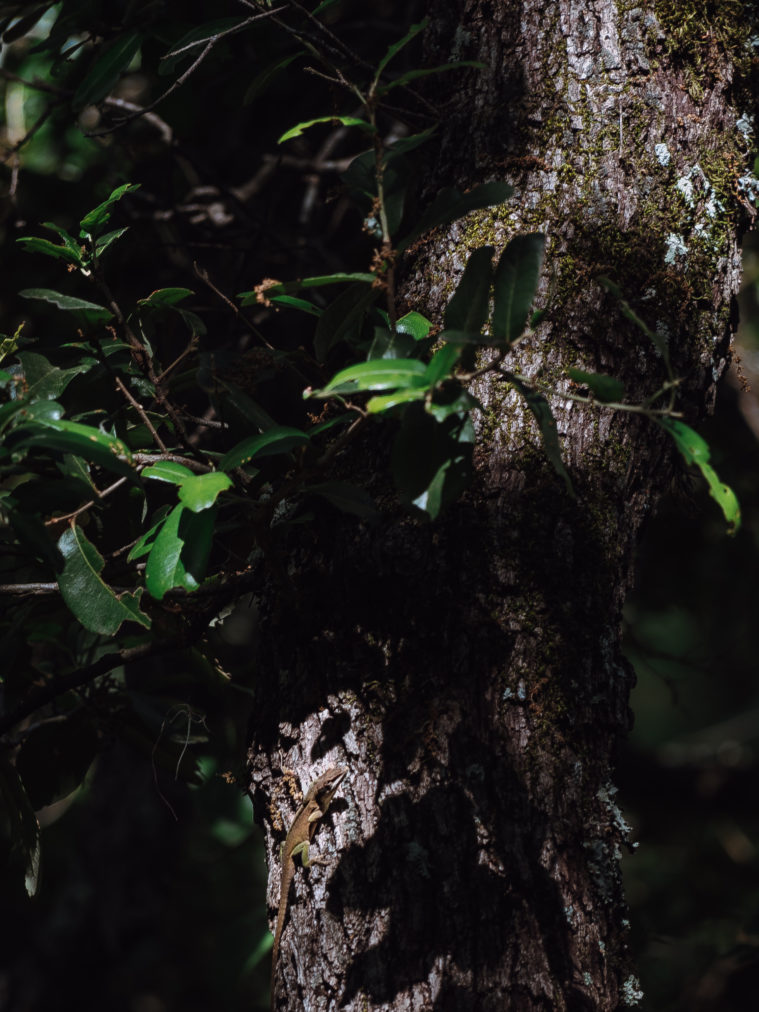
When Steve Winn—founder of RealPage, a property-management software for landlords—purchased the Norsworthy Ranch surrounding the canyon in 2018, Adams said he tried to encourage Winn to support the eco-lab project and introduced him to UT staff. Initially, Adams said, Winn seemed interested. But in December 2020, Adams said, Winn abruptly made an offer to buy the Roy Creek Canyon property. Surprised, Adams declined. The neighbor across the canyon, Jody Askins, likewise refused to sell. After that, Adams said frequent conversations with UT about establishing a formal field station dried up.
Mirasol declined to make Winn available for comment. Goldblart, who’s no longer with UT, declined comment, and David Hillis, director of UT’s Department of Integrative Biology, did not respond to an interview request. But communications between UT and the Adams family, obtained by the Texas Observer, confirm that initial plans detailed a joint field station between the Adams family, the Winns, and the university.
In April 2021, Mirasol Springs was announced as a “conservation-scale development” at Norsworthy Ranch. The plan included a 70-person luxury hotel, 55 residential lots, and the Hill Country Field Station, a partnership with the University of Texas, which would be located on the property.
Adams was furious about the announcement. “What do the hotel and these cabins and all these trails have to do with research?” he said. “It looks to me like they’re just using UT to greenwash.”
Construction on Mirasol Springs is set to begin early next year, and the developers have carried out hydrological surveys and negotiated extensively with local environmental groups, according to Jim Truitt, director of Mirasol Capital. To mitigate harm to Roy Creek Canyon, Truitt said the development will harvest rainwater for irrigation; ban septic systems, private wells, herbicides and pesticides; limit the footprint of home plots; and put an (as yet undisclosed) portion of the 1,400 acre property into a free conservation easement, which Mirasol plans to donate to a land trust—a nice addition for preservationists but no substitute for legally protecting the existing preserve.
The goal, Truitt said, is to construct as sustainable a development as possible, and not to harm Roy Creek Canyon. To avoid depleting precious groundwater, per Truitt, the development will rely primarily on surface water from the Pedernales River. The company was also legally obligated to file a permit with Hays County for groundwater to the tune of over 18 million gallons a year, but Truitt says the development will use that “only 10 to 20 percent of the time” over a 30-year period.
“Understanding and planning for extreme weather conditions, from droughts to flash floods, is an important component of any project in the Texas Hill Country,” Truitt said, adding the development would establish a central system to reclaim wastewater. “Our team recognizes the importance and the responsibility of designing a proactive water management system that will serve as a model for development in the Texas Hill Country.”
In times of heavy drought, however, when regulating agencies cut off surface water users, Mirasol might lean more heavily on groundwater than expected, said Doug Wierman, a hydrologist who has worked with the conservation-focused Wimberley Valley Watershed Association: “Once they have a groundwater permit in hand, they can use their maximum permit. Maybe they got it thinking, ‘We’re only gonna use this if we have to,’ but they still have the legal right to pump that full amount.”
And if that full amount were used, Wierman said, it could throttle the flow of water into Roy Creek. The results would be catastrophic for the canyon: As the springs dried, the clear creek and pools would stagnate, perhaps sinking into a toxic algal sludge that would kill the animals living in it and choke out the plants that need wetter conditions. This isn’t a theoretical concern. In Comanche Springs, out near Fort Stockton, excessive groundwater pumping for agriculture has essentially dried up the titular pools, with disastrous effects on endangered pupfish living within them. Closer to Austin, Wierman said, a drawdown in the water table caused by overpumping resulted in the spring at Jacob’s Well stopping its flow in 2002.
It’s also unclear whether the nearby stretch of the Pedernales is a reliable source of surface water, said Charlie Flatten, general manager of the Hays Trinity Groundwater Conservation District. That particular stretch of river isn’t well-studied, which means that it may also be partially groundwater-fed. “Frankly, nobody’s ever withdrawn water on a commercial basis from the Pedernales River, so that’s untested. We don’t know what happens if they start drawing large quantities.”
With climate change, droughts will only become more frequent too—something that isn’t generally factored into any of the state’s development plans. “Nobody’s quantifying it or using it for any permits,” Wierman said. “Everyone’s calculating water usage according to assumed baselines, not projections on the future.” That’s an increasingly dangerous gamble: In 2020, a study by researchers at UT and Texas A&M predicted an increase in megadroughts in the second half of the 21st century, with the Lone Star State set to possibly reach its driest conditions in a millennium.
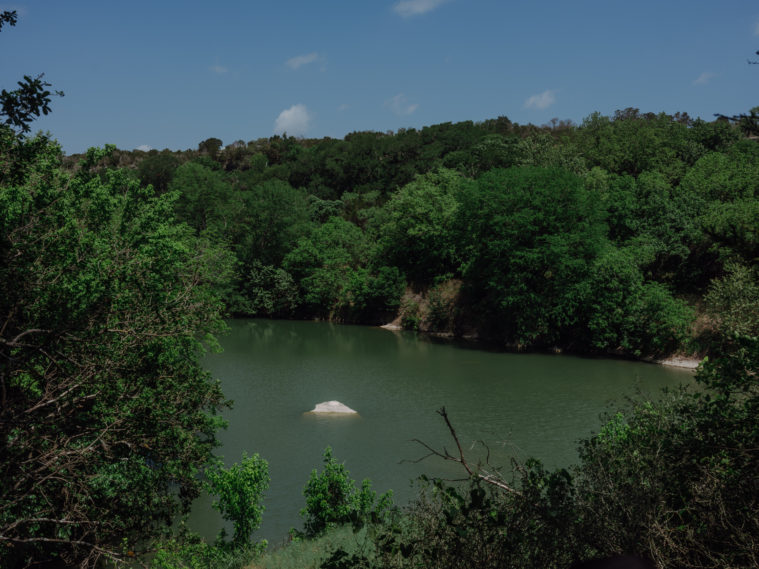
The ravages of climate and environmental change are already felt, even in the lost world of the Roy Creek Canyon Preserve. “The canyon used to be really wild,” Adams told me as we sat at a pair of picnic tables by the family cabin. Warblers flitted through the branches; our conversation was regularly interrupted by the sounds of some not-too-distant construction filtering down the limestone walls. Once, he said, cicadas filled every tree, their buzzing summer songs echoing off the rocks; monarch migrations fluttered through in fall like storms of falling leaves. He recalled how canyon evenings hummed with the hooting of owls, mournful whippoorwills and the jug-a-rum bellow of the bullfrogs, and how the rains made the springs rush and the waterfalls boom like thunder.
The changes crept in over the years, slow and cruel. The canyon’s snakes dwindled, likely beset by fire ants. The great drought of 2011 killed off a number of sensitive trees. The creek still runs, of course, but not the way it used to. “The weather patterns here have definitely changed,” Adams said. “The upper creek above us, three-quarters of a mile above our property, is completely dry. The flow comes from the groundwater, and the flow becomes less and less every year.”
And yet what persists beyond the great limestone walls remains remarkable. While no part of Texas remains truly unchanged by the passage of time, the canyon remains a rare—if slightly faded—snapshot of the Hill Country as it was a century ago: green, flowing creeks and deep, rich forests with their special bounty of plant and animal life. It remains a place that has never known cattle, the axe, or the plow. That makes it worth protecting. Adams is still working with public and private entities to get permanent legal protection for the land, but his project’s fate will now hinge on Mirasol keeping its promises not to suck the canyon dry.
“We want to keep it open for education. We want to have school children come here and learn about places like this at an early age. We intend to continue the eco-laboratory process or the wildlife management process as long as this place is alive,” Adams said.
“My father used to say: ‘Give me a city kid for one day, let me take him down here, and I’ll change his life forever.’ And it really has that kind of effect on people. It really can.”
Editor’s Note: A previous version of this article stated that Mirasol Capital plans to donate a portion of land to Hays County; in fact, it plans to donate the property to a land trust.
